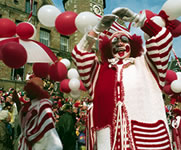
The "Old Salt Road" - also called the "via regia" or the king's highway - is a long-established trade route about 100 kilometres long running from Lüneburg to Lübeck. It runs through a magnificent holiday region of clear lakes and lush forests, to sleepy villages and ancient towns with splendid town halls, richly decorated town houses, churches and historical squares. Buildings from different architectural periods, Gothic, Renaissance and baroque, often abut each other. The wealth of all these towns was founded on salt - trading and transporting it, extracting it, buying and selling it or taxing the traders who travelled this route. The towns boosted their income by enacting laws forbidding traders and carriage-drivers from bypassing them. Anyone who disobeyed these laws could expect their goods to be confiscated. This ensured not only that the tax could be collected, but also that there was business for the inns, taverns and local tradespeople.

The term "white gold" with its overtones of wealth originated in the Middle Ages, when salt was not a condiment but essential to enable foodstuffs to be traded abroad. Fish, meat and all other perishable goods were preserved in salt so they could be transported over large distances. In those days, the journey along the Old Salt Road would take about 20 days, whereas today it takes less than two hours by car, not counting any time to stop and look at the places of interest along the way. As you might expect, the traffic was heavy back then, which made the route from Lüneburg, where the brine bubbled up, to Lübeck, from where the salt was shipped across the Baltic, one of the most important parts of the economy. The exact date when salt was first found in Lüneburg is lost in the mists of time, but legend has it that when a hunter once shot a white wild boar, it turned out not to be an albino, but a beast that had been joyfully wallowing in salt. A bone from the legendary "salt boar" hangs in Lüneburg town hall as a reminder of the story.




